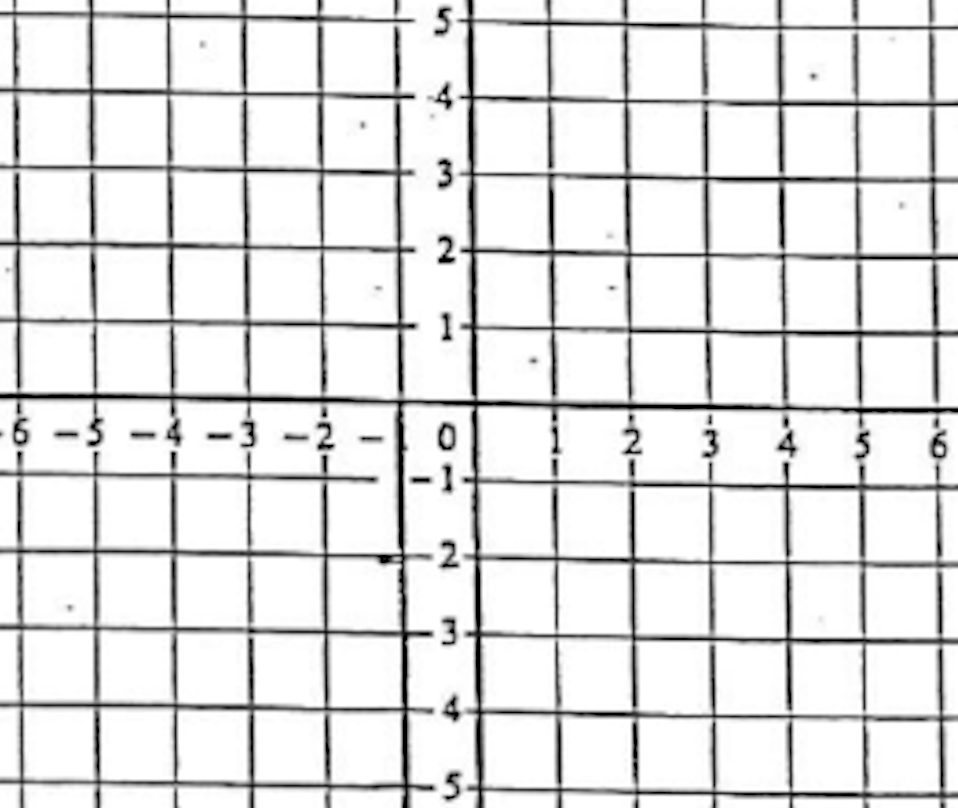the product of seven and twelve
7x12
4+5•3+1
20
Name the property shown:
7 + x + 11 = x + 7 + 11
Commutative
7c+19c
26c
Plot the point (-3, 3)

Left 3 and Up 3
The sum of two odd numbers is always odd.
False. Two odd numbers will always be even.
7+9=16
3+5=8
7+11=18
60 more than a number
n + 60
7 + (3 × 11 + 3)
43
Name the property shown:
(2 • 8) • 5 = 2 • (8 • 5)
Associative property
3c • 2
6c
Identify the points located at coordinates (2,4) and (3, 7) 
L and Q
The product of odd numbers is always even.
False. Multiplying 2 odd numbers will always be odd.
3x13=39
9x5=45
11x7=77
The difference between 42 and a number
42 - n
(2+6)2 - (10-2)
56
Name the property shown:
14 X 0 × 3 = 0
Zero Property
g•(5•7)
35g
What are the coordinates of the origin?
(0,0)
All multiples of 3 are odd.
False. When multiplying odd numbers, the multiples will alternate odd, even, odd, even.
3, 6, 9, 12, 15, 18, 21, 24, 27, 30
The quotient of a number and 15
n÷15 or n/15
7 + (6 × 52 + 3)
322
Which operation(s) can be used in the substitution property?
All of them. + - ÷ and x
(8 • s) + 9
8s+9
(12, 5) (4, 10) (3,2) (9, 1)
Domain: {3, 4, 9, 12}
Range: {1, 2, 5, 10}
What is the difference between a prime and composite number?
Prime numbers only have 2 factors; 1 and itself.
Seventeen less than a number
n - 17
122 – 22 × 2 ÷ (3 + 1)
120
What is the main difference between the additive identity property and the multiplicative identity property?
You add by zero, but you multiply by one in order to keep a number's identity.
6 + 0 = 6
6 • 1 = 6
4(7+p)+13
28+4p+13
4p+41
Which Quadrant would the coordinates (-1,7) fall in?
Quadrant 2
Division of whole numbers is commutative.
False. You cannot use the commutative property with division or subtraction.
30÷5=6 but. 5÷30=.166666